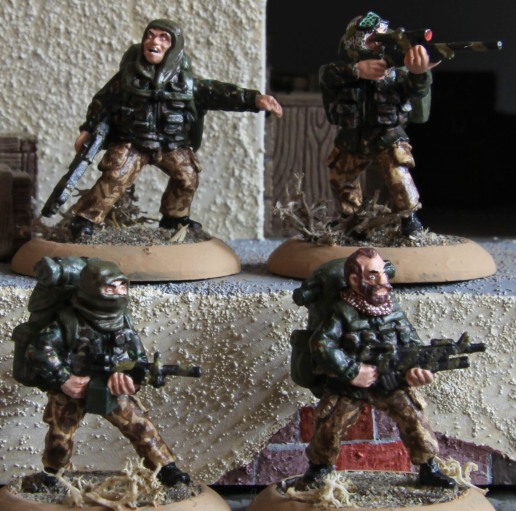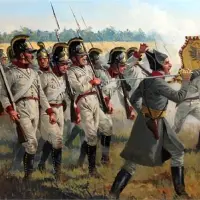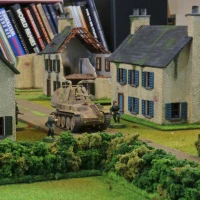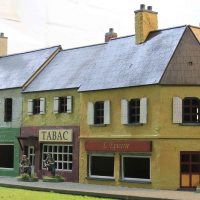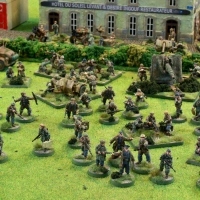
OK, today I finally ran out of bad puns, so without much further ado… here are the SAS and KSK.
SAS:
The Special Air Service (SAS) or “The Regiment” are widely regarded as the oldest and most experienced SF unit world-wide. They were created in Juli 1941 to sabotage the supply routes of the German Afrika Korps. The British choose a name to confuse the Germans… L Detachment, Special Air Service Brigade. The term air did not refer to any special mission of theirs and with just 66 men they were far too small for a brigade, but the name stuck. They caused havoc on the German lines and were expanded to 5 battalions during the war, with the third and fourth being made up of French and the fifth of Belgian nationals. These 3 foreign battalions were incorporated into their own nations forces after the war.
After the war they saw (controversial) use in Northern Ireland, prepared the Falklands landings, hunted Scuds during Desert Storm and war criminals on the Balkans. They freed hostages in Sierra Leone, fulfilled all kinds of missions in Afghanistan and Iraq and acted as advisers and target designators in Libia last year. But still they are best known for their action during the storming of the Iranian embassy in 1980.
Amongst the Special Forces they have a very special role, since they work in close conjunction with the UK´s police forces. In this role they do not only provide SWAT type teams or bomb disposal experts, but also advise, planning and surveillance, something that would be illegal for a military unit in many other western nations.
Today the SAS consists of three Regiments (one active, two reserve). The active 22nd Special Air Service Regiment consists of 4 Squadrons (A, B, D, and G), with 4 troops each. Each troop consisting of four four-men teams. Each troop has a speciality be it either as a Mountain Troop, Mobility Troop, Air Troop (HALO drops) or Boat Troop. All Squadrons rotate special training, so that all are kept on edge for any type of mission. Every six to nine month a different Squadron becomes CRW-Wing (Counter Revolutionary Warfare), essentially providing the counter terrorism forces.
Their abilities are underlined by the fact that other nations turn to them when they raise new special forces units. The US did so when it created Delta and Germany when it created the KSK.
The minis above all come from TAG´s SAS range. Again not the best minis, but about the best that were available when I painted them a couple of years ago. Back then I planned to wargame Afghanistan (an idea I have dropped since) so they are kitted out to represent a four men patrol in the mountains of the Hindukush. The wear Jungle DPM jackets and Desert DPM trousers. This could be seen a lot with British soldiers during the first months of operations in Afghanistan. I am not too sure why this was done, but I assume to better blend in with the terrain, which can be strange at times. Since my wargaming is just set in Europe these days, I have often contemplated repainting them, but can not get around to it. But maybe this troop has itself geared for a mission in the Lüneburger Heath were green over sand would be useful as well. 😉
KSK:
The German Kommando Specialkräfte (KSK) is maybe youngest of NATO´s special forces. For years logic had dictated that Germany did not need special forces of their kind. Due to the lessons learned during the 3rd Reich where the military had been used to suppress the population, German law absolutely forbids the use of the military in police actions on German soil. So the federal police fulfilled this role with the Grenzschutzsondergruppe 9 (GSG 9 / made famous by the storming of the Lufthansa jet “Landshut” in Mogadishu). Offensive operations by the German army were strictly forbidden by German law and for the purely defensive operations of the Cold War the existing Kampfschwimmer (roughly equivalent to the UDT´s) and the Fernspäher (long-range scouts) were deemed sufficient. Then came the end of the Soviet Union and the Cold War and along with it more German effort worldwide and missions existing forces could not handle. This reached its climax in 1994 when Germany found it had no forces (the GSG 9 was too small and no German military forces had the training) to deploy to rescue German nationals from Rwanda and had to turn to Belgium to do that. The embarrassment was only made worse by the fact that 12 Belgian soldiers lost their life during the mission. In the same year the German High Court decided, that peace keeping and even offensive operations outside NATO boarders where legal under certain conditions. The road was clear for the creation of the KSK in 1996.
While members were recruited from all units of the Bundeswehr, the Fernspäherkompanien were dissolved and incorporated into the KSK. The initial training was heavily supported by the British SAS, after which the KSK was to be modelled. Formation was completed in 1997 and the first missions conducted the following year, when they began the hunt for warcriminals in the Balkans. The same year saw them expand to their current strength of around 1100 men. They saw action in Afghanistan when they conducted scouting missions and provided flank security during the assault on Tora Bora and Operation Anaconda. It has been estimated that at least 100 KSK men are on constant deployment in Afghanistan in since 2001. This also includes their highly controversial use in the Task Force 47.
The airmobile and special operations capable Saarlangbrigade is their dedicated combat support units much in the way the PARA´s are to the SAS or the Rangers to Delta.
The above minis are from Devil Dog Designs, both from the KSK pack as well as the normal Bundeswehr pack. Some of the minis (namely those sporting MP-5s and MG-3) were converted using 1:35 scale weapons. Back then these were the best minis one could get, but unfortunately they show some minor deficits when it comes to equipment details.
Now these minis are from Eureka miniatures and show the clear evolution modern miniatures have gone through over the last decade if you compare them to both the TAG and DDD minis above.
What is next… tomorrow will see their opposition… Russian Spetznav. So stay tuned!
